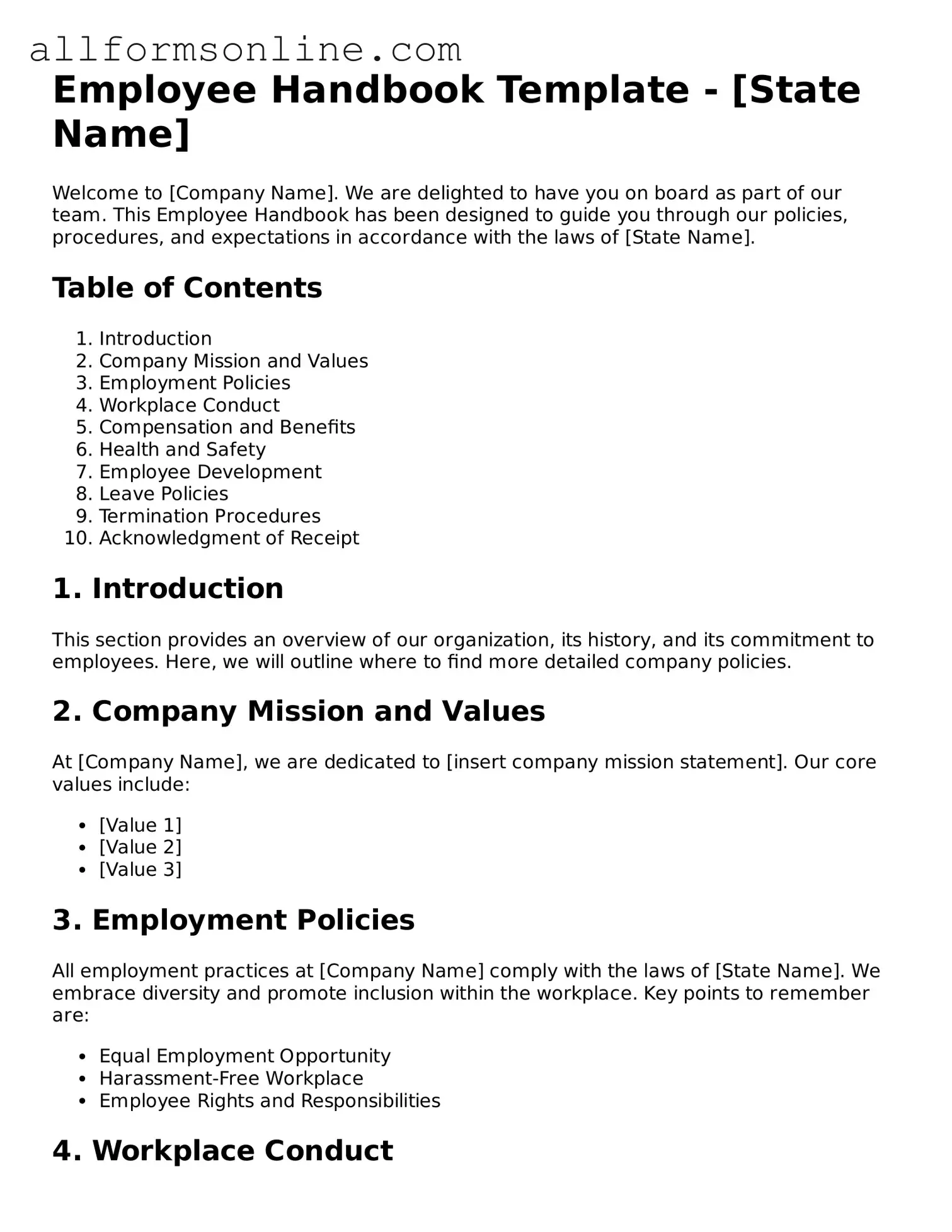What is the purpose of the Employee Handbook form?
The Employee Handbook form serves as a vital resource for both employees and employers. It outlines the company's policies, procedures, and expectations. By providing clear guidelines, the handbook helps to ensure that all employees understand their rights and responsibilities within the workplace. This document also fosters a positive work environment by promoting consistency and fairness in how policies are applied.
Who should complete the Employee Handbook form?
All employees are required to complete the Employee Handbook form. This includes new hires as part of their onboarding process, as well as existing employees when updates to the handbook occur. Completing the form signifies that the employee has read, understood, and agrees to abide by the policies outlined in the handbook. It is an essential step in ensuring that everyone is on the same page regarding workplace expectations.
How is the information collected on the Employee Handbook form used?
The information collected through the Employee Handbook form is primarily used to confirm that employees have acknowledged receipt of the handbook. This acknowledgment is crucial for legal and compliance purposes. Additionally, the data may help employers identify areas where employees may need further clarification or training regarding specific policies.
What should an employee do if they have questions about the Employee Handbook?
If an employee has questions about the Employee Handbook, they should reach out to their immediate supervisor or the Human Resources department. It is important for employees to seek clarification on any policies they do not understand. Open communication is encouraged, as it helps to ensure that all employees feel informed and supported in their roles.
What happens if an employee does not complete the Employee Handbook form?
Failure to complete the Employee Handbook form may result in misunderstandings regarding company policies and expectations. Employers may consider this a violation of compliance procedures. In some cases, employees who do not complete the form may face disciplinary action, as it is essential for maintaining a well-informed workforce. It is advisable for employees to prioritize this task to avoid any potential issues.
